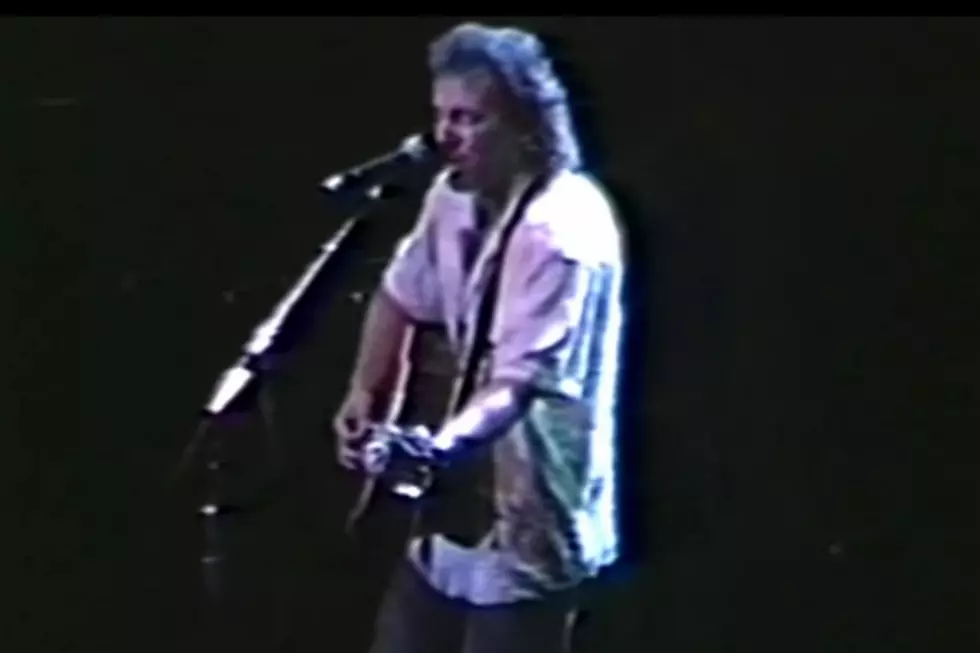
25 Years Ago: Bruce Springsteen Resurfaces Alone After Two-Year Break
After having disappeared from public for two years, Bruce Springsteen returned the stage for two nights at the Shrine Auditorium in Los Angeles on Nov. 16-17, 1990. The concerts, which also featured his longtime friends Jackson Browne and Bonnie Raitt, were a benefit for the Christic Institute.
But there was a twist: It was the first time that he was performing solo since 1972, before he had even had an album out. He noted his nerves to the audience upon taking the stage. "This sounds a little funny, but it's been a while since I've done this," he said. "So if you're moved to clap along, please don't. It's gonna mix me up.“ After the first song, “Brilliant Disguise,” he asked for quiet during the songs.
It had been a turbulent couple of years for Springsteen. The Tunnel of Love Express tour received mixed reviews and was rocked with the scandal of his affair with backup singer Patti Scialfa and the breakup of his marriage to Julianne Phillips. A year after the conclusion of the all-star Human Rights Now! tour, he did the unthinkable and fired the E Street Band. But he was coming through it. He and Scialfa then moved to Los Angeles and he was rumored to have been working on a new album. A few months before this night, their first son, Evan, was born.
Perhaps unsurprisingly, five of the 17 songs he played in the main set were from Nebraska, his stark acoustic album, while “Wild Billy’s Circus Story” was dusted off and “Darkness on the Edge of Town” was given a radical new arrangement. He also used the opportunity to debut four songs, "Red Headed Woman," "57 Channels (And Nothin' On)", "When the Lights Go Out” and "Real World.” Two others, “Soul Driver” and “The Wish,” were added to the set the next night. Both concerts ended with Springsteen, Browne and Raitt performing covers of Bob Dylan’s “Highway 61 Revisited” and Ry Cooder’s “Across the Borderline.”
And for someone whose public image as a regular, everyday guy was a key to his popularity, his disclosure that he had been in therapy was a shock. Introducing “My Father’s House” on the first night and “The Wish” on the second, he said that he’d gone to see a psychiatrist to help him deal with his longstanding issues with his parents.
Before “Reason to Believe,” Springsteen praised the Christic Institute, a public interest law firm that began legal proceedings against covert U.S. operatives whom they alleged were responsible for a 1984 press conference bombing in Nicaragua in which eight people were killed. “Over the past decade, the country’s been sold an illusion of itself and, for me, the Christic Institute is in the process of trying to make us all grow up. This song is about the price that blind faith and refusing to give up your illusions extracts from you.”
Following the concerts, Springsteen went back to work on the new album. But when trying to come up with a final song to sum up the themes of the record, he wrote an entirely new record’s worth of material. He released both projects, Human Touch and Lucky Town, on March 31, 1992.
Bruce Springsteen Albums, Ranked Worst to Best
Rock's Most Underrated Albums
More From Ultimate Classic Rock









